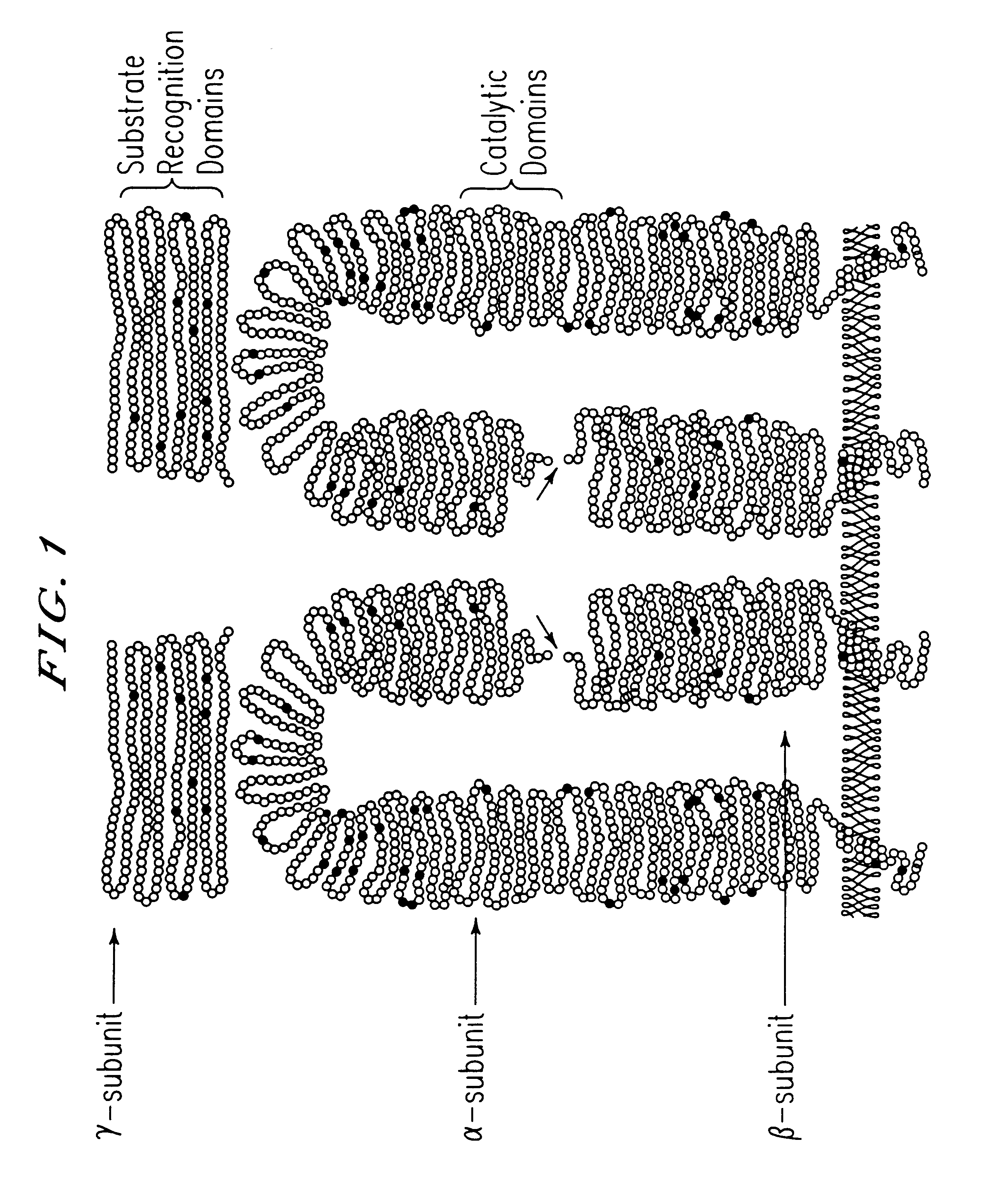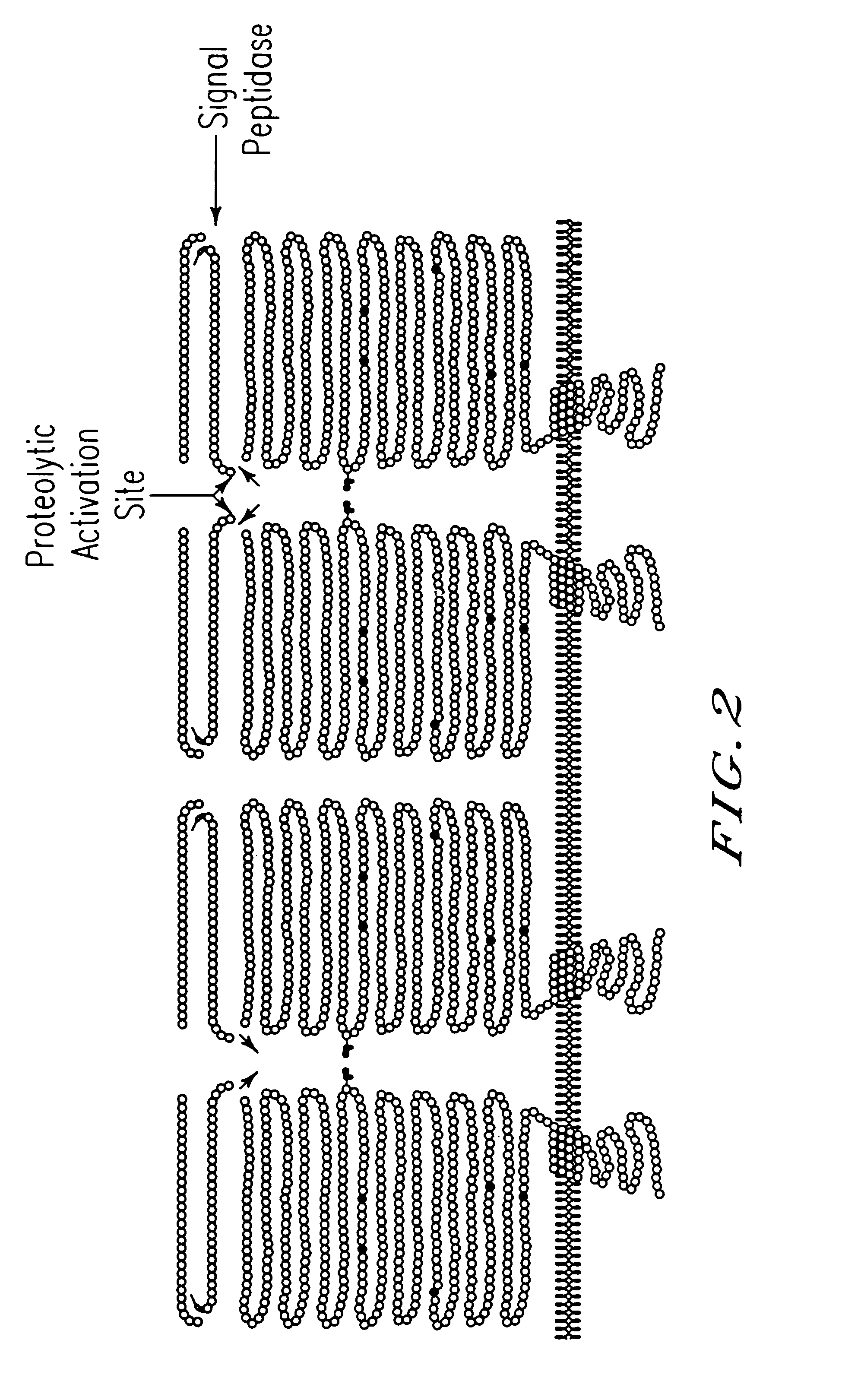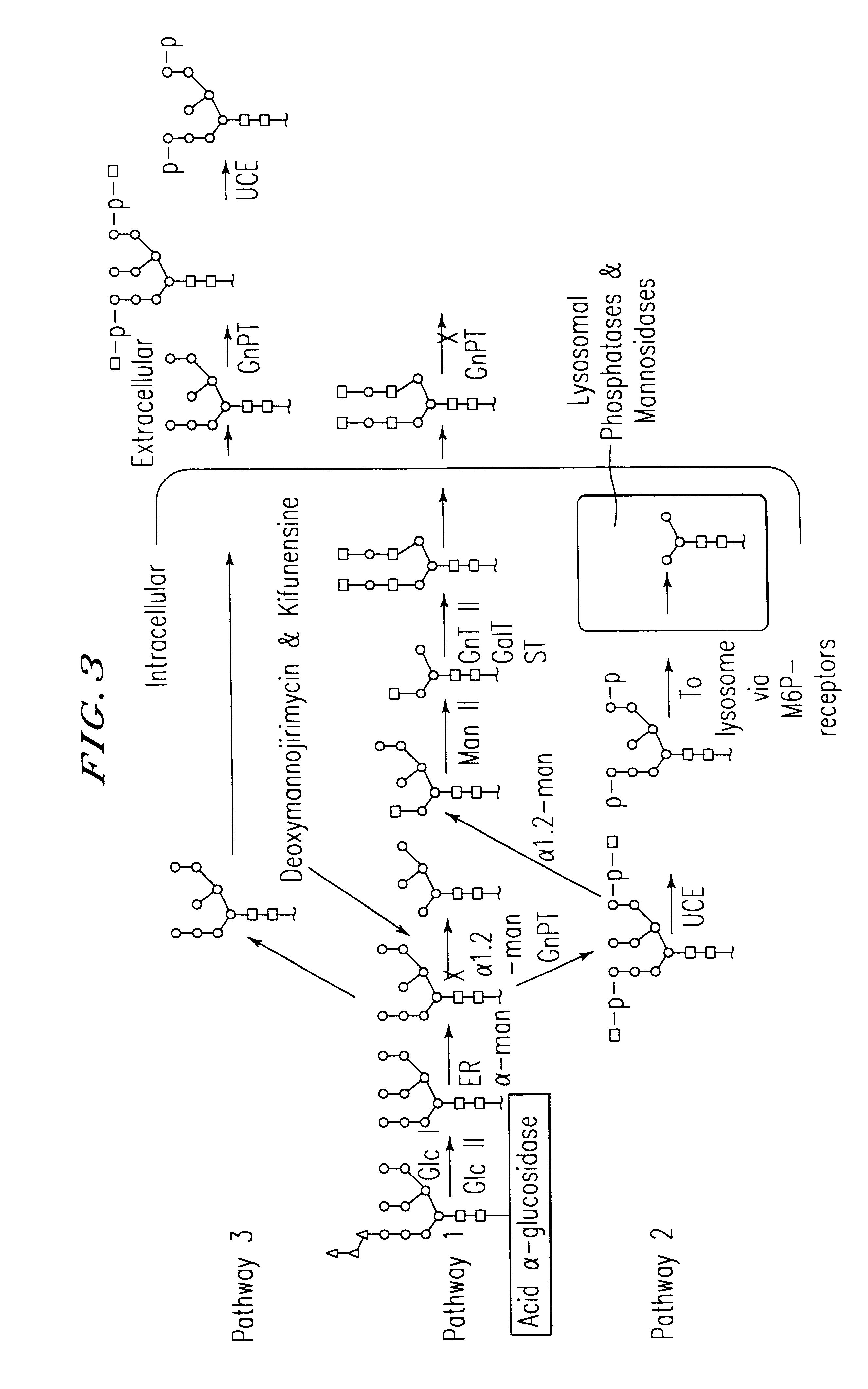GlcNAc phosphotransferase of the lysosomal targeting pathway
a phosphotransferase and lysosomal technology, applied in the direction of transferases, peptide/protein ingredients, drug compositions, etc., can solve the problems of inability to degrade, inability to make monoclonal antibodies required to isolate these proteins, and inability to degrad
- Summary
- Abstract
- Description
- Claims
- Application Information
AI Technical Summary
Benefits of technology
Problems solved by technology
Method used
Image
Examples
example 1
Preparation of Monoclonal Antibodies Specific for Bovine GlcNAc-phosphotransferase
Bovine GlcNAc-phosphotransferase was partially purified 30,000 fold as described (Bao, M., Booth J. L., et al. (1996). "Bovine UDP-N-acetylglucosamine: Lysosomal enzyme N-acetylglucosamine-1-phosphotransferase. I. Purification and subunit structure." Journal of Biological Chemistry 271:31437-31445) and used to immunize mice. Spleens of immune mice were removed and spenocytes fused with SP2 / 0 myeloma cells according to Harlow (Harrow, E. and Lane, D. (1988). Antibodies: a laboratory manual, Cold Spring Harbor Laboratory). The fusion was plated into 96 well plates and cultured in HAT media until hybridomas were visible.
Hybridomas secreting monoclonal antibodies capable of capturing GlcNAc-phosphotransferase from a crude sample were identified by incubation of hybridoma media (200 .mu.l) with 200 units. Partially purified GlcNAc-phosphotransferase and capturing the resulting immune complex on rabbit anti-...
example 2
Purification of Bovine GlcNAc-phosphotransferase
Lactating bovine mammary gland (6 kg) was collected at slaughter and immediately sliced into 10 cm thick slices and chilled in ice. Following homogenization in a Waring commercial blender, the post-nuclear supernatant fraction was prepared by centrifugation. Membrane fragments were collected by high speed centrifugation (39,000.times.g, 45 minutes) and membrane proteins were solubilized in 4% Lubrol, 0.5% deoxycholate. GlcNAc-phosphotransferase was specifically adsorbed from the solubilized membrane fraction by incubation overnight with 10 ml of monoclonal antibody PT 18 coupled to Ultralink.TM. matrix (substitution 5 mg / ml). The matrix was then collected by low speed centrifugation, washed with 0.025 M Tris-HCl, pH 7.4, 0.005 M MgCl.sub.2, 0.3% Lubrol buffer containing 1 M NaCl. The column was then washed with 2 column volumes of 0.01 M Tris-HCl, pH 7.4, 0.005 M MgCl2, 0.3% Lubrol buffer. GlcNAc-phosphotransferase was then eluted from...
example 3
Amino Acid Sequencing of Bovine GlcNAc-phosphotransferase
PUM
| Property | Measurement | Unit |
|---|---|---|
| molecular mass | aaaaa | aaaaa |
| molecular mass | aaaaa | aaaaa |
| mass | aaaaa | aaaaa |
Abstract
Description
Claims
Application Information
 Login to View More
Login to View More - R&D
- Intellectual Property
- Life Sciences
- Materials
- Tech Scout
- Unparalleled Data Quality
- Higher Quality Content
- 60% Fewer Hallucinations
Browse by: Latest US Patents, China's latest patents, Technical Efficacy Thesaurus, Application Domain, Technology Topic, Popular Technical Reports.
© 2025 PatSnap. All rights reserved.Legal|Privacy policy|Modern Slavery Act Transparency Statement|Sitemap|About US| Contact US: help@patsnap.com



